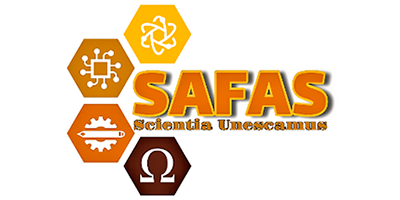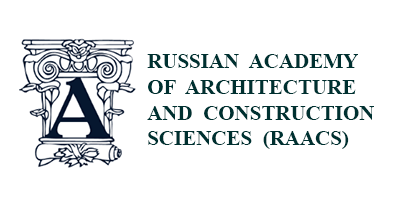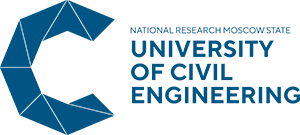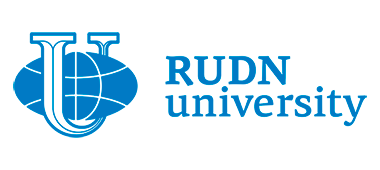About conference
ECPPM 2020-2021 is the 13th European Conference on Product & Process Modelling, the flagship conference event of the European Association of Product and Process Modelling (EAPPM), with a long standing history of excellence in product and process modelling in building industry, which is currently known as building information modelling (BIM). For over 2years, the biannual ECPPM (European Conference on Product and Process Modelling) conference series, as the oldest BIM conference, has provided an unique platform for the presentation and discussion of the most recent advances with regard to the ICT (Information and Communication Technology) applications in the AEC/FM (Architecture, Engineering, Construction and Facilities Management) domains.
The series of conferences was initiated by Prof. Raimar Scherer in 1994 as a joint initiative of several European research projects related to construction information technology. ECPPM was in fact the first conference focusing on BIM. Previous conferences were successfully held in 1994-2018.
Upcoming 13th ECPPM 2020-2021 conference brings together the academia, research, construction industry, software development community to the topic of information management in the building and construction industry. It will provide attendees with strategic knowledge on the achievements and trends in research, development, standardisation and industrial implementation of BIM technologies. Notwithstanding the constant and frequent spur of new information technologies, the product and process modeling remains fundamental and very important in facilitating ICT based solutions in the AEC/FM domains. Traditionally strong at ECPPM has been an overview of the EU research projects and the participation of European experts. In spite of its name, the conferences have been open and have attracted numerous researchers from overseas.
Previous conferences were successfully held in:
| Previous conferences | Year |
|---|---|
| Dresden, Germany | 1994 |
| Watford, England | 1998 |
| Lisbon, Portugal | 2000 |
| Portorož, Slovenia | 2002 |
| Istanbul, Turkey | 2004 |
| Valencia, Spain | 2006 |
| Nice, France | 2008 |
| Cork, Ireland | 2010 |
| Reykjavik, Iceland | 2012 |
| Vienna, Austria | 2014 |
| Limassol, Cyprus | 2016 |
| Copenhagen, Denmark | 2018 |
Key dates
- The second Call: September 1, 2020
- Abstract Submission:
September 15September 22, 2020 - Abstract Acceptance Notification: October 1, 2020.
- Paper Submission: November 15, 2020.
- Paper Notification:
December 1December 7, 2020. - Camera-Ready Paper Submission: January 7, 2021.
- Payment of publication fee: March 7, 2021.
- Online conference registration: September 7, 2021.
Conference topics
ECPPM 2020-2021 invites researchers, scientists and industry practitioners to submit papers addressing every aspect of product and process modelling technology and innovations in information and communication technologies for the building and construction industry in agreement with, but not limited to, the following main suggestive themes:
- Information and Knowledge Management.
- Semantic Web and Linked Data.
- Communication and Collaboration Technologies.
- Software Interoperability.
- BIM Servers and Product Lifecycle Management Systems.
- Digital Twins and Cyber-Physical Systems.
- Sensors and Internet of Things.
- Big Data.
- Artificial and Augmented Intelligence in AEC.
- Construction Management.
- 5D/nD Modelling and Planning.
- Building Performance Simulation.
- Contract, Cost and Risk Management.
- Safety and Quality.
- Sustainable Buildings and Urban Environments.
- Smart Buildings and Cities.
- BIM Standardization, Implementation and Adoption.
- Regulatory and Legal Aspects.
- BIM Education and Training.
- Industrialized Production, Smart Products and Services.
All submitted papers will be reviewed by experts in the field based on the criteria of originality, significance, quality and clarity. All accepted papers will be included in the proceedings of ECPPM 2020-2021 that will be published by EAPPM and CRC Press / Balkema. The proceedings will be submitted to the leading indexing services, including Thomson Reuters, Scopus, EI-Compendex, Google Scholar.
Programme Committee
Chairperson
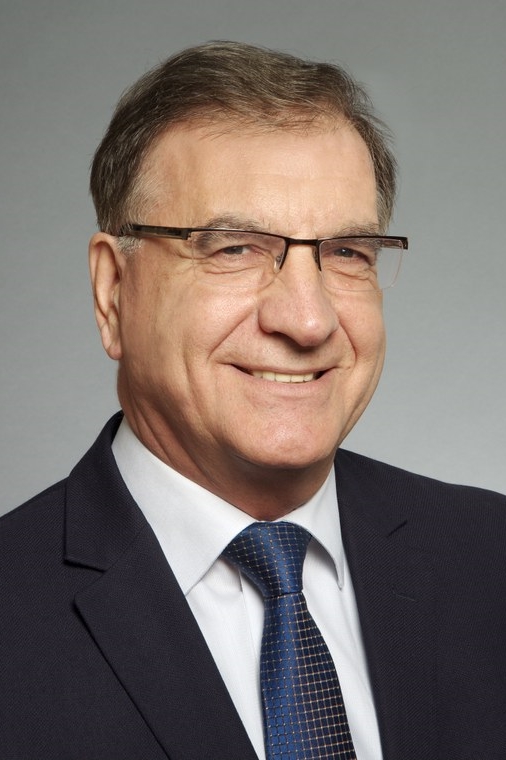 |
Prof. Dr.-Ing. Raimar J. Scherer is Senior Professor at the Institute of Construction Informatics at the Technical University Dresden responsible for the research. He was heading the Institute from 1994-2017. He has more than 3years of experience in construction IT, including 7 years as full professor for CAD/CAM and structural reliabilty at the University of Karlsruhe and several years of practice in the construction industry including ICT consultancy and a one-year stay at a world leading CAD provider. His research activities include the broad spectrum of construction ICT aspects. He has been involved in 2BIM related EU and 20 German research projects, out of which he co-ordinated 16. He is member of the multimodel group of ISO 21597 since 2017 and was member and vice chairperson of the building product model group in ISO 10303 from 1988 to 1999, the forerunner of IFC (ISO 16739). In 1994 he founded the first European BIM conference, the ECPPM. In 1999 he implemented the first BIM Server in Europe, based on the later standardized IFC building core model. He was founder and vice chairperson of the IFC-ST4 structural model group. He developed the simplified MVD/IDM method in 2012 and the multimodel method in 2014. In 2014 he received the ZUSE Medal, the annual highest Award for informatics in Germany. Email: Raimar.Scherer@tu-dresden.de Site: https://tu-dresden.de/die_tu_dresden/fakultaeten/fakultaet_bauingenieurwesen/cib |
Vice Chairperson
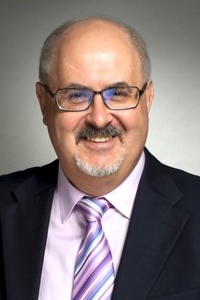 |
Prof. Dr.-Sc. Vitaly Semenov is heading the Department of System Integration and Multi-Disciplinary Applied Systems at the Ivannikov’s Institute for System Programming of the Russian Academy of Sciences since 2015. His main research interests focus on model-driven software engineering methodologies and CASE toolkits for creating advanced digital platforms and integrated systems that meet the requirements of multi-functionality, multi-modality, scalability, interoperability, portability and deployment in heterogeneous environments. He has lead around 25 Russian and international R&D projects and has published 150 articles on fundamental topics of software engineering, data management, computer graphics, and operations research. He is a professor for computer science at the Moscow Institute of Physics and Technology, and the Higher School of Economics both leading Russian State Universities. For more than 20 years he has been giving lectures on software visualization, information visualization, and scientific visualization. Emerging BIM technologies are of particular attention. From 2007 to 2017 he directed the development of 4D modeling and planning system at Synchro Software Ltd. He developed innovative methods for spatial-temporal project planning, near-optimal project scheduling, effective rendering of large pseudo-dynamic scenes, and semantic reconciliation of replicated data, which made it possible to provide competitive advantages of the system and successfully employ it in hundreds of complex construction projects and large infrastructure programs worldwide. Email: sem@ispras.ru Site: https://ispras.ru/en/ |
Steering Committee Members
- Robert Amor, University of Auckland, New Zealand.
- Ezio Arlati, Politecnico di Milano, Italy.
- Vladimir Bazjanac, Stanford University, USA.
- Jakob Beetz, Eindhoven University of Technology, Netherlands.
- Adam Borkowski, Institute of Fundamental Technological Research, Polish Academy of Sciences, Poland.
- Michel Böhms, TNO, Netherlands.
- Jan Cervenka, Cervenka Consulting, Czech Republic.
- Symeon Christodoulou, University of Cyprus, Cyprus.
- Attila Dikbas, Instanbul Medipol University, Turkey.
- Djordje Djordjevic, Institute of Civil Engineering and Architecture, Serbia.
- Boyan Georgiev, University of Architecture, Civil Engineering and Geodesy, Bulgarien.
- Ricardo Gonçalves, New University of Lisbon, UNINOVA, Portugal.
- Gudni Gudnason, Innovation Centre, Iceland.
- Eilif Hjelseth, Oslo Met, Norway.
- Noemi Jimenez Redondo, CEMOSA, Spain.
- Jan Karlshøj, Technical University of Denmark, Denmark.
- Peter Katranuschkov, Technische Universität Dresden, Germany.
- Tuomas Laine, Grandlund, Finland.
- Ardeshir Mahdavi, Vienna University of Technology, Austria.
- Karsten Menzel, Technische Universität Dresden, Germany.
- Sergey Morozov, Institute for System Programming, Russian Academy of Sciences, Russia.
- Sergio Munoz, AIDICO, Instituto Technologia de la Construccion, Spain.
- Pieter Pauwels, Ghent University, Belgium.
- Byron Protopsaltis, Sofistik Hellas, Greece.
- Yacine Rezgui, Cardiff University, UK.
- Dimitrios Rovas, Technical University of Crete, Greece.
- Ana-Maria Roxin, National Centre for Scientific Research, France.
- Vaidotas Sarka, Vilnius Gediminas Technical University, Lithuania.
- Sven Schapke, Thinkproject, Germany.
- Ian Smith, EPFL, Ecole Polytechnique Federale de Lausanne, Switzerland.
- Rasso Steinmann, Institute for Applied Building Informatics, University of Munich, Germany.
- Väino Tarandi, KTH, Royal Institute of Technology, Sweden.
- Helga Tauscher, Dresden University of Applied Sciences, Germany.
- Ziga Turk, University of Ljubliana, Slovenia.
- Alain Zarli, R2M Solution, France.
Local Committee Chair
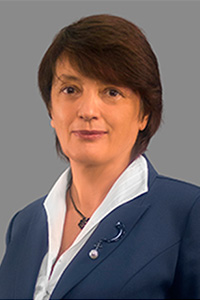 |
Prof. Vera V. Galishnikova, Prorector, International department, Moscow State University of Civil Engineering (MGSU), Moscow, Russia. Vera V. Galishnikova is the Prorector of the Moscow State University of Civil Engineering and the Head of the Department of Civil Engineering of the RUDN University. She serves as an Academician since 1991. In the past Dr. Galishnikova served in Volgograd State University of Architecture & Civil Engineering (Russia) and Michigan State University (USA). Prof. Vera Galishnikova took her engineering education in Saratov State Polytechnic Institute (Saratov, Russia), and specialized in Civil Engineering. She received her first PhD degree from the Moscow Institute of Civil Engineering in 1991, and in 2004 second PhD degree from the Michigan State University. Prof. Galishnikova received her DSc degree from the Supreme Attestation Commission of Russian Federation in 2016. Computational Civil Engineering; Building information modelling; Topological computer models of buildings; Computational mechanics of complex steel structural systems – latticed plates and shells, thin-walled plate and plate-rod structures; Nonlinear finite element analysis of space frames; Nonlinear stability of structures; Structural renovation and complex modernization of buildings etc. are the main fields of her research. |
Local Committee Members
- Arutyun Avetisyan, Ivannikov Institute for System Programming RAS, Russia.
- Vitaly Semenov, Ivannikov Institute for System Programming RAS, Russia.
- Vasily Shutkin, Ivannikov Institute for System Programming RAS, Russia.
- Pavel Akimov, Moscow State University of Civil Engineering, Russia.
- Makhmud Kharun, Moscow State University of Civil Engineering, Russia.
Founding Members
- Raimar Scherer, Institute of Construction Informatics at the TU Dresden, Germany.
- Jeffry Wix, United Kingdom.
- Patrice Poyet, France.
- Godfried Augenbroe, Netherlands.
Key Speakers
Philipp Nikandrov (GORPROJECT, Moscow, Russia)
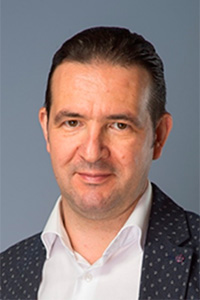 |
Title:BIM-based Design of Megatall Projects: Lakhta Center Case Abstract:Lakhta Center in Saint-Petersburg , Europe's tallest building and the world's northernmost supertall skyscraper was possibly the most complex object the world to design and build. With non-orthogonal geometry, curved helix/spiral façade envelopes and non-repetitive floors (neither of floors plans repeat each other) this project would probably take few decades to design and deliver by conventional ways , that designers and engineers used to operate before BIM and 3D-modelling replaced the drawing boards. To withstand some of the most extreme climate conditions in Europe while exceeding Russia's rigorous energy and safety requirements and achieving LEED Platinum certification—was an ambitious task for design and engineering. Architecturally organic form of the Lakhta Center tower consists of five wings that twist almost 90 degrees (0.82 degrees per floor), tapering to the very top of the spire - so none of its 89 floors repeat, and this inhabitable sculpture's extremely complex geometry can only be handled through 3D modeling and BIM software, as vitally important toolkit, that helped to avoid a large number of serious mistakes during design and further installation. The team constantly worked out the geometric conflicts between different elements and systems in the design process. Ultimately, designing the Lakhta Center was a tremendous challenge: there were so many unique elements—architectural, structural, and engineering—so we had to develop more than 6,000 new Revit families. The BIM model was developed with an LOD of 400 and immediately after its completion it was passed to the owner for operation and maintenance to continue its post-construction mission. Biography:With 25 years of international experience in architecture and masterplanning Philipp Nikandrov is a leading Russian architect with substantial expertise in large scale, complex and unique projects of high-rise typology. His design approach creates the route between contextualism and minimalism, reaching the complexity through simplicity. The strong identity in his concepts is always rooted in architectural metaphors derived from site context, history of the place and cultural background of the project in a way that the final form creates the symbol, project logo and recognizable icon on the skyline. Since joining international company RMJM in 1997 Philipp served as senior designer and project architect in some of the most prestigious projects, working in the firm’s offices in UK, Middle East and later in Russia. In 2011 after ending his 15 years international career in RMJM as director and European Studio co-principal Philipp joined the leading Russian design company GORPROJECT as its chief architect and principal designer, managing few high-rise projects in Moscow and Saint-Petersburg. As design team leader Philipp successfully participated in many prestigious international and regional design competitions, and one of the most notable amongst his large-scale projects from competition to realization was Okhta Centre (2006-2010) and later Lakhta Centre (from 2011) - Gazprom HQ in Saint-Petersburg with 465m tower component, which is currently under construction and will rank as Europe’s tallest skyscraper targeting LEED Gold certification for its achievements in sustainable design. As chief designer and project architect Philipp has delivered the iconic Evolution Tower from its earlier concept to completion (2004-2015). The jewel of Moscow City high-rise cluster Evolution Tower received many international and national awards (second place in Emporis Skyscraper Awards in 2016, the featured finalist of 2015 CTBUH Best Tall Building Awards and finalist of MIPIM Award 2016, etc). Philipp is currently working on the design of adjacent plot, where civic piazza with amphitheatre forms the main open public space of Moscow City business downtown with its centerpiece building, featuring the world’s largest clock observed from the surrounding towers. Philipp Nikandrov is an author of many high-profile publications and participant of architectural exhibitions and international conferences such as CTBUH, UNESCO World Heritage, Forum 100+, Skyscrapers Asia Summit 2017 in Singapore (as its chairman). |
Franz Baader, Prof. Dr.-Ing. (TechnischeUniversität Dresden, Dresden, Germany)
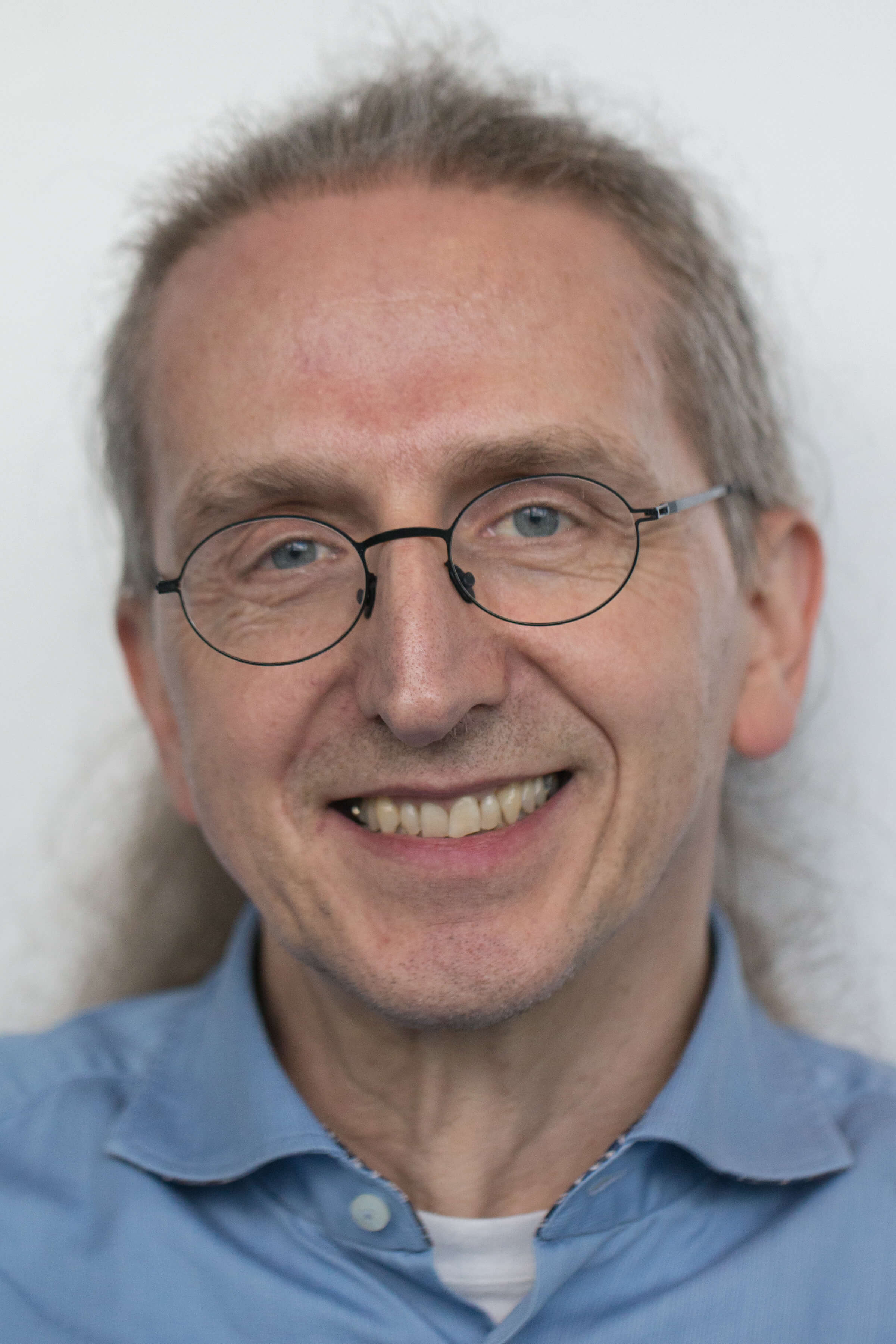 |
Title:A Description Logic Journey Abstract:Description Logics (DLs) are a well-investigated family of logic-based knowledge representation formalisms, which are frequently used to formalize ontologies in various application areas such as the Semantic Web, biology, medicine, mechanical engineering, chemical process engineering, civil engineering, and situation recognition. An important design goal when developing a DL is to find a good compromise between the expressive-ness of the representation language and the complexity of reasoning (i.e., computing implicit consequences of the formal statements in the ontology). In the first wave of DL research, the trend was to go towards more expressive DLs by adding new concept constructors, which were motivated by specific applications, but turned out to be useful also in other domains. Whereas reasoning in the obtained expressive DLs had a high worst-case complexity, highly optimized DL systems nevertheless behaved well in practice. With the adoption of the DL-based standard ontology language OWL, the number and the size of ontologies grew rapidly, which made efficient reasoning all the more important. This triggered a second wave of DL research, in which lightweight DLs with tractable reasoning problems (i.e., ones solvable in polynomial-time) were designed, such as the members of the EL family. Another trend was that ontology-based reasoning about data became more important, which led to the development of the DL-Lite family of DLs, which allowed reducing reasoning about data with respect to DL-Light ontologies to answering relational database queries. It then became apparent that the specialized algorithms developed for lightweight DLs, such as the consequence-based reasoning procedures for EL, could also be adapted to more expressive DLs. Although these algorithms are then no longer guaranteed to run in polynomial time, they show a “pay as you go” behavior, i.e., they can deal with the expressive language, but are the more efficient the less “costly” concept constructors are used in the ontology. Due to the research efforts of the last 30 years, the DL community can no offer a large portfolio of different representation languages and reasoning systems to ontology engineers and users of ontologies, from which they can choose the language and system that best fits the application at hand. Biography:Franz Baader is full Professor for Theoretical Computer Science at TU Dresden (Germany) since 2002 and Director of the Institute for Theoretical Computer Science at TU Dresden since 2005. From 2012 to 201he was Dean of the Faculty of Computer Science of TU Dresden. He has received his doctoral degree (Dr.-Ing.) in Computer Science from the University of Erlangen Nürnberg in 1989, and from 1989 to 1993 was Senior scientist and Project leader at the Germany Research Center for Artificial Intelligence (DFKI) in Kaiserslautern and Saarbrücken. From 1993 to 2002 he was professor for Theoretical Computer Science at RWTH Aachen. His main research area is Logic in Computer Science, and there in particular Automated Deduction and Knowledge Representation. He and his research group have worked on Description Logics for 30 years, and have laid the the logical and algorithmic foundations for the Description Logics underlying OWL and the OWL 2 profile OWL 2 EL. Franz Baader is co-editor of the highly-cited Description Logic Handbook and co-author of the first textbook on Description Logics, both published by Cambridge University Press. He has published more than 250 research articles in international conferences and journals. He is a fellow of the European Association for Artificial Intelligence (EurAI) since 2004 and a member of the Academia Europe since 2011. |
Thomas Liebich, Dr.-Ing. (AEC3, buildingSmart, Germany)
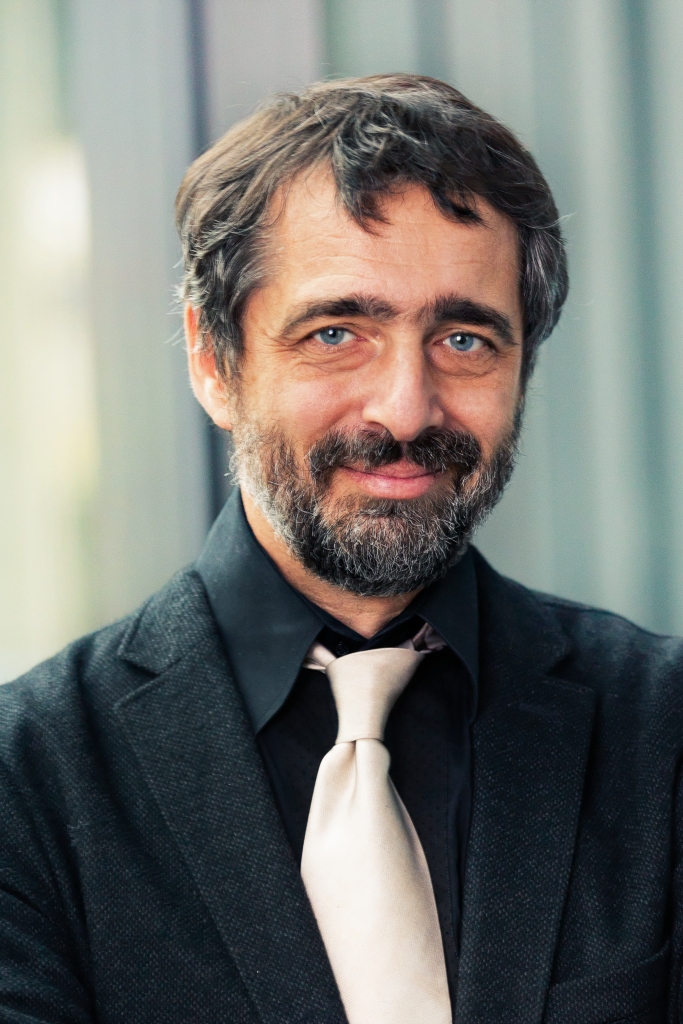 |
Title:OpenBIM. Quarter Centure Development and Perspectives of the IFC standard Biography:Dr. Thomas Liebich holds a Diploma in Architecture and a PhD from the Bauhaus University Weimar. Over the last 10 years he worked actively on development and introduction of digital methods in design and construction with focus on Building Information Modeling, in particular on open BIM. Thomas is managing partner of AEC3 Deutschland GmbH, a consulting firm delivering dedicated services for specifying and applying building information modeling methods and interoperability for the participants of construction projects. He is consulting government agencies, owners, operators, contractors and general designers on using BIM for collaborative work, including business process improvement. Another focus of his professional life is standardization. He is leading the buildingSMART International team for developing the Industry Foundation Classes (IFC) since 1999. He is the convener of the ISO working group TC 59/SC 13/JWG 12 for data sharing in construction and of the European counterpart CEN/TC 442/WG 02 on Information Exchanges for BIM. In Germany he is the chairman of the DIN committee for BIM. Major projects he carried out in his professional career include the world's first automatic code checking system in Singapore, the technical support for the first international architectural contest requiring openBIM - the National Museum in Oslo Norway, and the development of open BIM guidelines and validation process for the US Army Corps of Engineers in Germany. He is the co-author of the recent BIM Guide for Germany developed for the Federal Agency for Buildings, City Planning and Urban Affairs, contributed to the Road Map for Digital Design and Construction for the German Ministry of Transportation and Digital Infrastructure, BMVI, and is the co-lead for the scientific assessment of the first BIM pilots on infrastructure projects in Germany. He is part of the German BIM Consortia to support the BIM Roadmap 2020 and for the assessment of the 13 BIM pilots of Deutsche Bahn on behalf of BMVI. He has been involved in many leading R&D projects, including the recent EU projects INTERLINK (object type library for road constructions). He consults the international IFC Rail project (China, France, Switzerland, Austria, Sweden, Finland) on data standards for railways (track, signal, communication and energy), including high-speed railways. He also is involved in open BIM education and training activities, giving lectures at universities, and for professional associations. |
Program
Conference Programme & Book of Abstracts can be downloaded here.
Conference Overview and Statistics can be downloaded too.
Follow the references below to watch Conference video:
ECPPM 2020-2021 | Room A | 15.09.2021
ECPPM 2020-2021 | Room A | 16.09.2021
Registration
Registration for the online conference
In order to participate in the conference please provide the required information to the organizer by filling out the following form.
Both speakers and listeners can register for conference via this form. If you are a speaker, you have to provide the title of the paper that you are going to present. We will use this information to draw up the program of the conference. If you would like to present multiple papers, please provide their titles.
The conference proceedings will be distributed among registered speakers. They have the option to request electronic key, printed book or both. Electronic keys will be provided by the date of the conference. Printed proceedings will be distributed by Prof. Scherer after the conference.
If you cannot present your paper due to good reasons but would like to receive the proceedings, please contact us.
Purchase of conference proceeding eBook
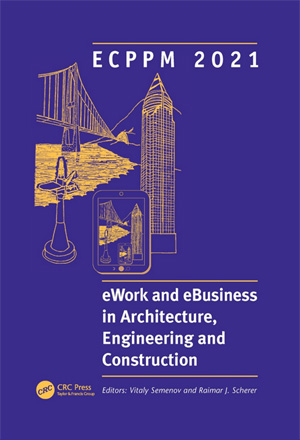 To buy eBook "ECPPM 2021 - eWork and eBusiness in Architecture, Engineering and Construction: Proceedings of the 13th European Conference on Product & Process Modelling 2021" // Ed. Vitaly Semenov, Raimar J. Scherer, CRC Press, 596 pp. please contact ecppm@ispras.ru to request an invoice. The eBook cost is $150 and can be paid by bank transfer using SAFAS operator details specified below:
To buy eBook "ECPPM 2021 - eWork and eBusiness in Architecture, Engineering and Construction: Proceedings of the 13th European Conference on Product & Process Modelling 2021" // Ed. Vitaly Semenov, Raimar J. Scherer, CRC Press, 596 pp. please contact ecppm@ispras.ru to request an invoice. The eBook cost is $150 and can be paid by bank transfer using SAFAS operator details specified below:
Beneficiary Name: ANO "SAFAS"
Account Number: 4070 3840 0028 7000 0008
Bank Name: ALFA-BANK
Bank Address: 27 Kalanchevskaya Street, Moscow-107078, Russia
SWIFT Code: ALFARUMM
Payments within Russia must be made in rubles (₽ 11250) in accordance with the following details:
Получатель: АНО "САФАС"
ИНН получателя: 5003138768
КПП получателя: 500301001
Расчетный счет: 4070 3810 8028 7000 0076
Название банка: АО "АЛЬФА-БАНК"
Кор. счет: 3010 1810 2000 0000 0593
БИК банка: 044 525 593
4. If you need an invoice, please contact ecppm@ispras.ru. If any other questions, please contact the SAFAS operator directly: admin@safasrus.ru.
Paper Submission
The submissions should contain original, high quality work, not submitted or published elsewhere. All accepted papers will be included in the proceedings of ECPPM2020 that will be published by EAPPM and CRC Press / Balkema.
Abstracts (500 to 800 words; no figures) of proposed papers should be submitted as soon as possible but no later than the abstract submission date. Authors will be notified of acceptance by the Conference Editors. Final acceptance will be based upon review of the full-length paper which must be received before the corresponding conference deadline.
Abstracts and full-length papers should be submitted electronically (through the ECPPM2020 web site) in MS-WORD (.doc/.docx) format and should conform to EAPPM specifications (double-column, 12-point Times New Roman font size, 13 point line spacing, 6 - 8 pages). Full instructions and MS-Word templates can be found here.
The camera-ready version of the full paper should be submitted via EasyChair by adding the file to your existing paper submission. Authors who have already sent it by e-mail don’t have to do anything.
Consent Form
The consent form for publication can be downloaded here. Please submit the signed consent form via EasyChair by adding the file to your existing paper submission. Authors who have already sent it by e-mail don’t have to do anything.
Submission Guidelines
Submissions are accepted online through easychair.org, where you may register and submit your abstracts in a few minutes.
If your abstract has been accepted, you can submit the full paper.
To submit the full paper, please DO NOT create new submission. Rather, please use your existing submission (the one you have created to submit the abstract):
1) Follow the link: https://easychair.org/my/conference?conf=ecppm2020
2) Log in to EasyChair.
3) Enter ECPPM 2020 as author. You will be able to see the list of your submissions.
4) To view or update your submission click on the icon in the "View" column.
5) Click "Update file" in the upper right corner and upload a .doc/.docx file with your full paper.
Contacts
Ask questions here
You can contact us by email to ecppm@ispras.ru.
Vasily Shutkin,
ECPPM 2020-2021 secretary,
v451ly@ispras.ru
Vitaly Semenov,
ECPPM 2020-2021 vice chairperson,
sem@ispras.ru
Venue address
Moscow, Leninskiy prospect, 32A, the Main building of the RAS (not far from Moscow Metro station "Leninskiy prospect" and Moscow Central Circle station "Ploshchad Gagarina").
Details
Important update: due to high pandemic and organizational risks the conference will be held online.



